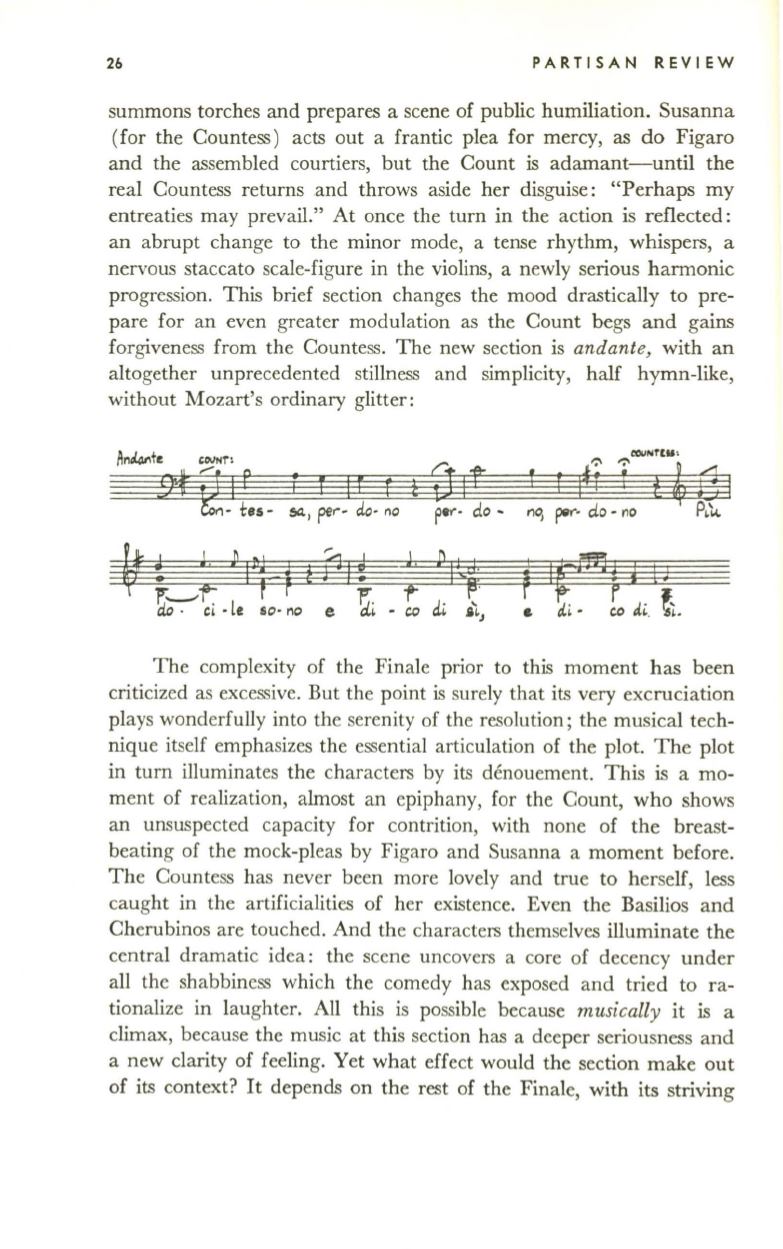
26
PARTISAN REVIEW
summons torches and prepares a scene of public humiliation. Susanna
(for the Countess) acts out a frantic plea for mercy, as do Figaro
and the assembled courtiers, but the Count is adamant-until the
real Countess returns and throws aside her disguise: "Perhaps my
entreaties may prevail." At once the tum in the action is reflected:
an abrupt change to the minor mode, a tense rhythm, whispers, a
nervous staccato scale-figure in the violins, a newly serious harmonic
progression. This brief section changes the mood drastically to pre–
pare for an even greater modulation as the Count begs and gains
forgiveness from the Countess. The new section is
andante,
with an
altogether unprecedented stillness and simplicity, half hymn-like,
without Mozart's ordinary glitter:
The complexity of the Finale prior to this moment has been
criticized as excessive. But the point is surely that its very excruciation
plays wonderfully into the serenity of the resolution; the musical tech–
nique itself emphasizes the essential articulation of the plot. The plot
in tum illuminates the characters by its denouement. This
is
a mo–
ment of realization, almost an epiphany, for the Count, who shows
an unsuspected capacity for contrition, with none of the breast–
beating of the mock-pleas by Figaro and Susanna a moment before.
The Countess has never been more lovely and true to herself, less
caught in the artificialities of her existence. Even the Basilios and
Cherubinos are touched. And the characters themselves illuminate the
central dramatic idea: the scene uncovers a core of decency under
all the shabbiness which the comedy has exposed and tried to ra–
tionalize in laughter. All this is possible because
musically
it is a
climax, because the music at this section has a deeper seriousness and
a new clarity of feeling. Yet what effect would the section make out
of its context? It depends on the rest of the Finale, with its striving


